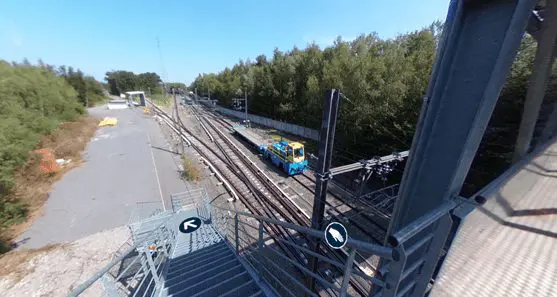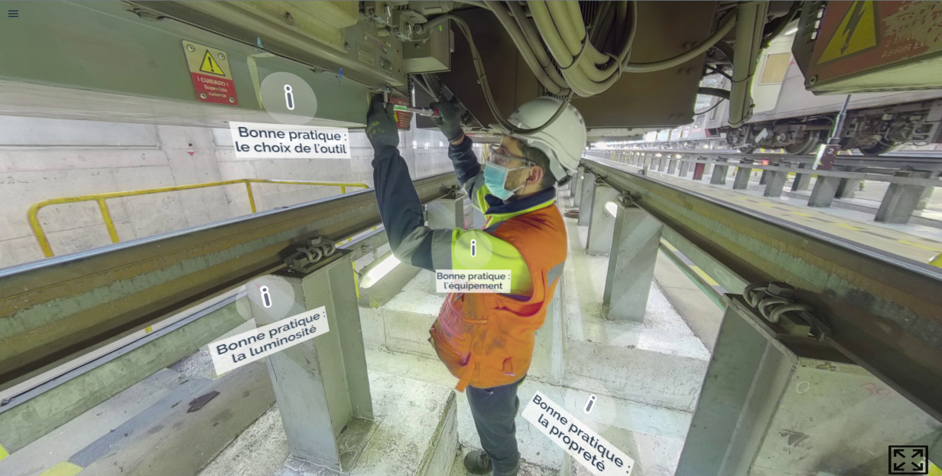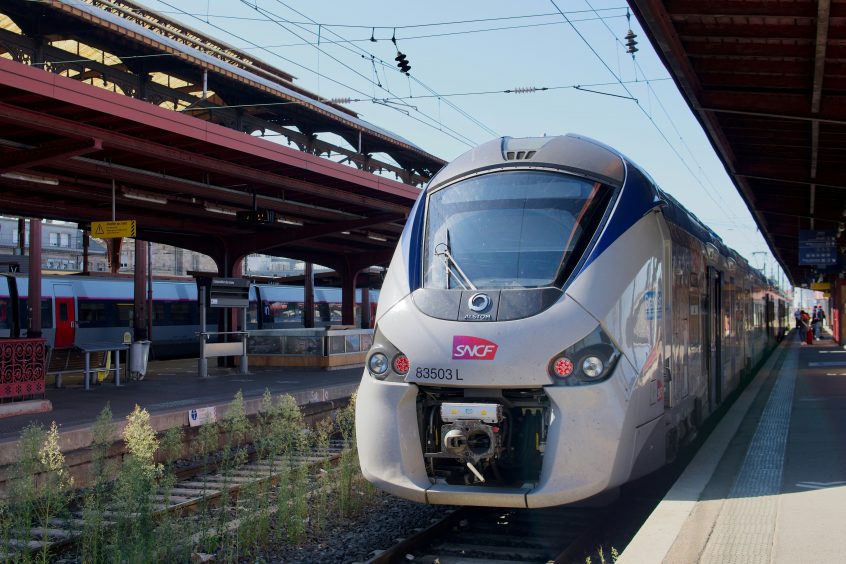You’re hearing more and more about Immersive Learning or Virtual Reality training and you’re curious to talk to those who have taken the plunge?
During a professional breakfast on February 28th at STATION F, explore the advice and experiences of Alstom and PSA : why did they choose Immersive Learning to enhance their training programs, and how did they implement it in France and internationally ?
In anticipation of these discussions, here is a short testimonial from Franck Gaillard, Global Learning Director at Alsto

Franck Gaillard, Global Learning Director at Alstom
What were you doing in terms of training before Immersive Learning, and why did you turn to Uptale and Virtual Reality?
Franck : « For the past 3 years, I have taken over the leadership of Alstom University and the Learning function for the group. Previously, the training activities were mainly focused on Classroom Training. Following the acquisition of the Energy business, it was necessary to establish within the new Alstom (now a pure player in transportation) a Corporate University structure and a Learning function at the forefront of the latest digital tools for training. At that time, we made choices, including technological choices for the deployment of Digital Learning. »
« In the span of 3 years, we went from deployment in 23 countries to over 60 countries, and from training 2,300 individuals to over 25,000 in 2018/2019. It was necessary to be much more agile and embrace a significantly larger volume of activity (10 times larger). This required a cultural and methodological shift. At that point, we chose a strategy that allows everyone easy access to the group’s knowledge and enables everyone to create easily shareable content.
Therefore, we chose to use tools for Digital Learning that are purely ATAWADAC (Any Time, Any Where, Any Device, Any Content). And in the “Any Content” aspect, there was a challenge: we were doing video, e-learning, serious games… a variety of means, sometimes created internally and sometimes purchased from the market, but what was missing for us was Virtual Reality.
How could we deliver Virtual Reality, which until then required absolutely enormous technological resources? And that’s how we discovered Uptale. We found with Uptale the means to address all these issues : widespread distribution, on any platform (VR headsets, computers, smartphones) of Virtual Reality content that could be easily created in-house by our experts. The solution was completely aligned with our strategy.
Moreover, the critical aspect of the catch is the relevance of the solution from the perspective of a company that needs to internationalize and export its knowledge worldwide. This is an important issue for Alstom.»
Why do you find it interesting to use this technology for training ?
Franck : «Once we address the questions of international dissemination and knowledge created internally, once we overcome all these constraints, what makes Virtual Reality important for training? It is primarilyg the impact in terms of learning, almost physiologically, it is the information retention that Virtual Reality provides and that e-learning does not offer.»
This strong retention is inherent to several conditions specific to Virtual Reality :
« The context : for a learner to be effective in recalling what they have learned or in performing tasks/technical gestures taught to them, the learning context is quite crucial. It has been demonstrated that the closer the learning context is to the real environment, the more likely the person is to recall what they have learned. What better way to immerse learners than in a Virtual Reality that is an almost perfect replica of the situation in which they will have to work.»


« Emotion: with Virtual Reality, we add something that we wouldn’t have in traditional training, and that’s emotion. We have a very concrete example of this with our risk prevention experience in Virtual Reality: when a person is about to cross the tracks without following safety instructions, the train comes, and you feel like you’re about to be run over, it’s impressive! And that’s what makes it memorable. The day we find ourselves in a similar situation, we will know not to cross the tracks and will look for the footbridge. »
« Action : the context is an essential element, emotion as well, and then comes the question of action, meaning that I can act, I am not passive in front of my screen or a video just watching what’s happening. I perform actions, gestures… of course, it depends on the depth and complexity of these actions. But the simple act of making a decision or looking in a certain direction, means being the origin of what happens. Being the actor in one’s own training allows us to go beyond simple immersion. There is a better anchoring of what is happening
And this ability to take action is not present in traditional e-learning or video, whereas with Immersive Learning, we are completely in it, experiencing the effects of context, emotion, and action.»

Today, you have mainly deployed modules for safety or ‘hard skills.’ Do you plan to create experiences in the future with different themes?
Franck: « Yes, absolutely. These are areas that still need to be explored and developed for us. I even envision a module for “well-being.” I would like to create a kind of mindfulness, placing people in a relaxing setting, like a Japanese garden, for example, to work on relaxation and being zen.
For now, what is most mastered is indeed awareness or the realm of safety. We can now provide the “hard skills” aspect with more technical modules, such as the integration of 3D objects to manipulate, for example.
Then there is another aspect, which is that of virtual tours. Even before the arrival of newcomers on-site, we can make them discover it in advance, thanks to Virtual Reality. It’s extraordinary to be able to project oneself because when they arrive, they are not lost, they know where to go. »

